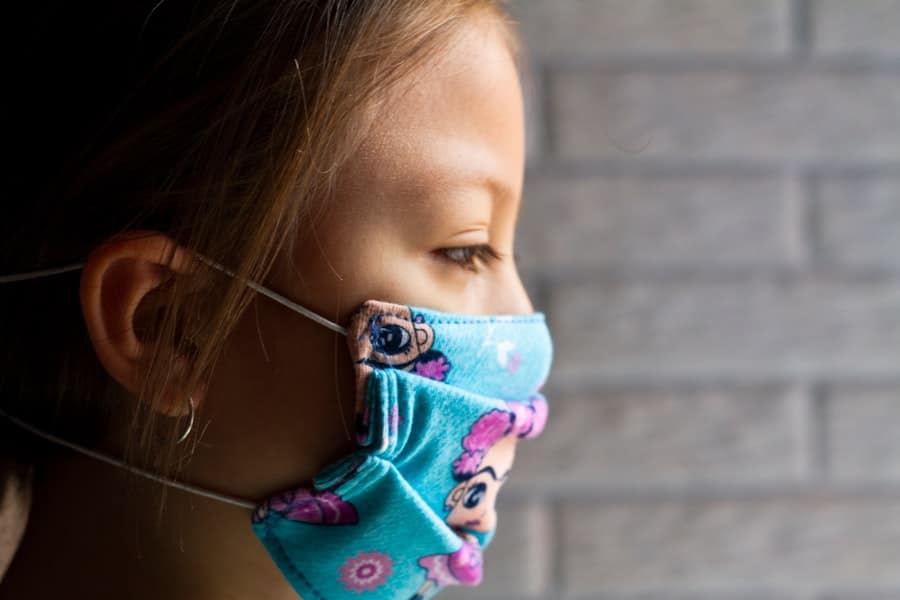The COVID-19 pandemic has fundamentally altered the landscape of public health, prompting a rapid evolution in how we monitor and respond to health crises. Among the myriad of technological advancements that emerged during this period, wearable devices have gained significant attention for their potential to enhance health monitoring and safety protocols. Wearables, which include smartwatches, fitness trackers, and health-monitoring devices, have transitioned from mere fitness companions to critical tools in the fight against infectious diseases.
Their ability to collect real-time data on various health metrics has positioned them as invaluable assets in pandemic response strategies. As the world grappled with the unprecedented challenges posed by COVID-19, the integration of wearables into public health initiatives became increasingly apparent. These devices not only facilitate individual health tracking but also contribute to broader epidemiological efforts by providing data that can inform public health decisions.
The convergence of technology and healthcare through wearables has opened new avenues for understanding disease transmission, monitoring symptoms, and ensuring compliance with safety measures. This article delves into the multifaceted role of wearables in pandemic response, exploring their applications, benefits, and the challenges they present.
Key Takeaways
- Wearables have played a crucial role in pandemic response by monitoring health and safety.
- Implementation of wearables in pandemic response has shown promising results in tracking and controlling the spread of the virus.
- Data collection and analysis using wearables have provided valuable insights for public health measures.
- Wearables have had a significant impact on public health and safety measures during the pandemic.
- Despite their potential, challenges and limitations exist in using wearables for pandemic response, but future implications and opportunities are promising.
The Role of Wearables in Monitoring Health and Safety
Wearable technology has revolutionized the way individuals monitor their health, offering a range of functionalities that extend beyond traditional health assessments. During the pandemic, wearables have been instrumental in tracking vital signs such as heart rate, temperature, and oxygen saturation levels. For instance, devices equipped with sensors can detect deviations from baseline health metrics that may indicate the onset of illness.
This capability is particularly crucial in the context of COVID-19, where early detection of symptoms can significantly influence treatment outcomes and reduce transmission rates. Moreover, wearables have facilitated contact tracing efforts by utilizing GPS and Bluetooth technology to monitor interactions between individuals. By logging proximity data, these devices can help identify potential exposure to infected individuals, thereby enabling timely interventions.
For example, some smartwatches have integrated features that alert users if they have been in close contact with someone who has tested positive for COVID-19. This proactive approach not only empowers individuals to take necessary precautions but also aids public health authorities in managing outbreaks more effectively.
Case Study: Implementation of Wearables in Pandemic Response

A notable example of wearable technology’s implementation during the pandemic can be observed in the case of the University of California, San Diego (UCSD). In an effort to mitigate the spread of COVID-19 on campus, UCSD launched a pilot program that involved distributing wearable devices to students and staff. These devices were designed to monitor physiological data such as heart rate variability and skin temperature, which are indicators of potential illness.
The program utilized a combination of wearable technology and mobile applications to create a comprehensive health monitoring system. Participants were required to wear the devices continuously, allowing for real-time data collection. The information gathered was analyzed to identify patterns that could signal an outbreak or an increase in symptomatic cases.
This initiative not only provided valuable insights into the health status of the campus community but also fostered a culture of accountability and awareness regarding personal health and safety.
Data Collection and Analysis Using Wearables
The efficacy of wearables in pandemic response is largely attributed to their ability to collect vast amounts of health-related data efficiently. These devices are equipped with advanced sensors that can monitor various physiological parameters continuously. For instance, smartwatches can track heart rate fluctuations, sleep patterns, and even stress levels through biometric feedback.
This data is then transmitted to cloud-based platforms where it can be aggregated and analyzed. Data analytics plays a crucial role in interpreting the information collected from wearables. Machine learning algorithms can be employed to identify trends and anomalies within the data set, enabling healthcare professionals to make informed decisions based on real-time insights.
For example, if a significant number of users report elevated heart rates or unusual temperature readings, it may prompt further investigation into potential outbreaks within a specific community or demographic group. The ability to analyze data at scale not only enhances individual health monitoring but also contributes to broader public health surveillance efforts.
Impact of Wearables on Public Health and Safety Measures
The integration of wearables into public health strategies has had a profound impact on safety measures during the pandemic. By providing individuals with tools to monitor their health proactively, wearables have encouraged greater personal responsibility regarding health management. Users are more likely to adhere to safety protocols such as social distancing and mask-wearing when they have access to real-time data about their own health status.
Furthermore, wearables have facilitated communication between individuals and healthcare providers. Many devices are equipped with features that allow users to share their health data directly with medical professionals. This capability has proven invaluable during the pandemic when telehealth services surged in popularity.
Patients can receive timely advice based on their monitored metrics without needing to visit healthcare facilities physically, thereby reducing the risk of virus transmission in clinical settings.
Challenges and Limitations of Using Wearables in Pandemic Response

Despite their numerous advantages, the use of wearables in pandemic response is not without challenges. One significant limitation is the issue of data privacy and security. As wearables collect sensitive health information, concerns arise regarding how this data is stored, shared, and utilized.
Ensuring that user data is protected from breaches while still allowing for effective public health monitoring is a delicate balance that must be addressed. Additionally, there is the challenge of device accessibility and equity.
Public health initiatives must consider these factors to ensure that wearable technology is inclusive and equitable.
Future Implications and Opportunities for Wearables in Public Health
Looking ahead, the potential for wearables in public health extends far beyond pandemic response. As technology continues to advance, we can anticipate even more sophisticated devices capable of monitoring a wider array of health metrics with greater accuracy. Innovations such as non-invasive glucose monitoring or advanced respiratory tracking could revolutionize chronic disease management and preventive care.
Moreover, the integration of artificial intelligence with wearable technology presents exciting opportunities for personalized healthcare solutions. AI algorithms could analyze individual health data over time to provide tailored recommendations for lifestyle changes or early interventions based on predictive analytics. This shift towards personalized medicine could enhance overall population health outcomes by promoting proactive rather than reactive healthcare strategies.
The Potential of Wearables in Pandemic Response
The role of wearables in pandemic response has underscored their potential as transformative tools in public health management. By enabling real-time health monitoring and facilitating data-driven decision-making, these devices have proven invaluable during times of crisis. As we continue to navigate the complexities of global health challenges, the lessons learned from the integration of wearables into pandemic response will undoubtedly shape future public health strategies.
The ongoing evolution of wearable technology holds promise for enhancing our ability to respond to emerging health threats while simultaneously improving individual health outcomes. As we embrace these innovations, it is essential to address the challenges associated with privacy, accessibility, and equity to ensure that the benefits of wearables are realized by all segments of society. The future of public health may very well hinge on our ability to harness the power of technology in ways that promote safety, well-being, and resilience in the face of adversity.
In the context of the case study “Wearables Supporting Pandemic Response,” it’s interesting to explore how different smartwatch brands have been contributing to health monitoring and pandemic response efforts. A related article that delves into the comparison between two major players in the smartwatch industry is titled “Apple Watch vs Samsung Galaxy Watch.” This article provides insights into the features and capabilities of these devices, which have been instrumental in health tracking and monitoring during the pandemic. For more information, you can read the full article by following this link.
FAQs
What are wearables?
Wearables are electronic devices that can be worn on the body as accessories or implants. These devices are often designed to track information about the user’s health and fitness.
How do wearables support pandemic response?
Wearables can support pandemic response by tracking and monitoring individuals’ health data, such as temperature, heart rate, and respiratory rate. This data can be used to identify potential COVID-19 symptoms and to monitor the health of individuals in quarantine or isolation.
What are some examples of wearables used in pandemic response?
Examples of wearables used in pandemic response include smartwatches, fitness trackers, and medical-grade wearable devices. These devices can be equipped with sensors to monitor vital signs and detect early signs of illness.
How do wearables help in early detection of COVID-19 symptoms?
Wearables can help in early detection of COVID-19 symptoms by continuously monitoring the user’s vital signs and alerting them to any abnormalities. This early detection can prompt individuals to seek testing and medical care, potentially reducing the spread of the virus.
What are the challenges of using wearables for pandemic response?
Challenges of using wearables for pandemic response include ensuring the accuracy and reliability of the data collected, addressing privacy concerns, and ensuring equitable access to these devices for all individuals, including those in underserved communities.

